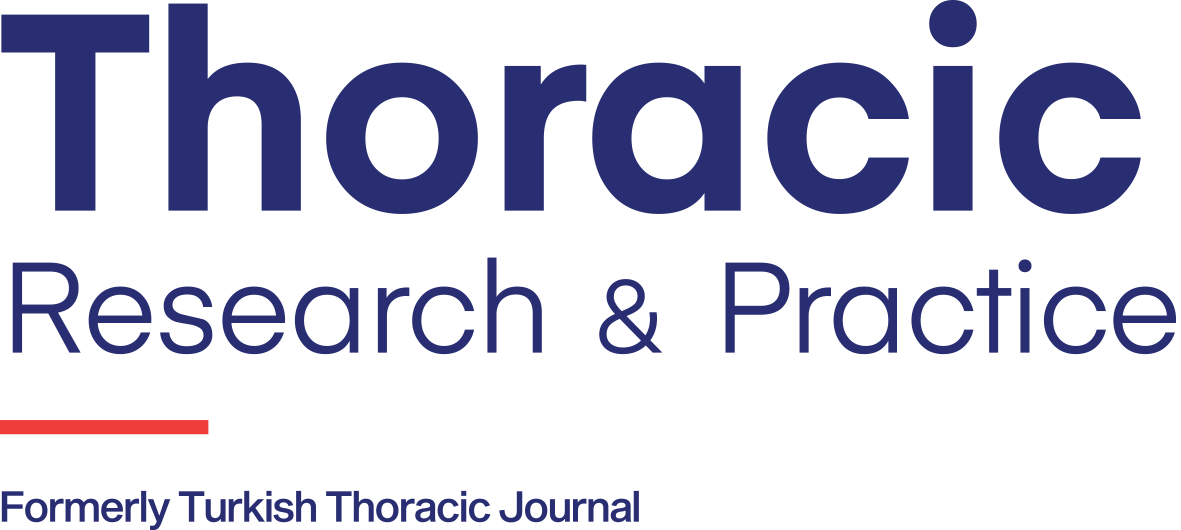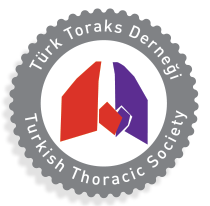Abstract
OBJECTIVE
Depression is a frequent comorbidity in obstructive sleep apnea (OSA) patients. There is a scarcity of data on the impact of depression on the outcomes of OSA.
MATERIAL AND METHODS
Using the National Inpatient Sample (2018), we identified hospitalizations in the US with OSA. Following propensity-score matching, the two cohorts of OSA with depression (OSA+D+) vs. without depression (OSA+D-) were compared for demographic and comorbidities profiles differences. Multivariable regression analyses were performed to assess the odds of events with depression versus those without.
RESULTS
Of 2,169.730 hospitalizations in patients with OSA, 20.1% had comorbid depression. Matched cohorts included 846,150 admissions in both groups: OSA+D+ and OSA+D-. Both cohorts predominantly comprised Caucasians, the elderly (median age, 64 vs. 65 years), and females (55.5% vs. 55.2%). OSA+D+ cohort had a higher prevalence of hypertension, diabetes, hyperlipidemia, congestive heart failure, anemia, smoking, substance abuse, prior myocardial infarction (MI), transient ischemic attack (TIA), TIA/stroke, and venous thromboembolism than the OSA+D- group (all P < 0.001). Paradoxically, there was decreased risk of all-cause mortality [odds ratios (OR): 0.79, 95% confidence interval (CI): 0.73-0.86], major adverse cardiac and cerebrovascular events (OR: 0.83, 95% CI: 0.80-0.87), acute MI (OR: 0.80, 95% CI: 0.76-0.85), dysrhythmia/atrial fibrillation (OR: 0.81, 95% CI: 0.79-0.83), and cardiac arrest including ventricular fibrillation (OR: 0.65, 95% CI: 0.73-0.82) in the OSA+D+ cohort (P < 0.001).
CONCLUSION
OSA+D+ patients had better in-hospital outcomes as compared to OSA+D- despite having a higher burden of comorbidities. Additional research is warranted to validate this paradoxical effect of depression in OSA.
Main Points
• Obstructive sleep apnea (OSA) patients have a higher prevalence of depression; data is scarce on the impact of depression on the outcomes of OSA.
• The two cohorts of OSA with (OSA+D+) vs. without depression (OSA+D-) were compared for demographic and comorbidities profile differences using the National Inpatient Sample (2018).
•Patients with OSA with depression had better in-hospital outcomes compared to OSA+D- despite having a higher burden of comorbidities.
• Compared to the OSA group, patients in the OSA and depression group have lower levels of serotonin and catecholamines, which could explain the more severe adverse cardiovascular outcomes.
INTRODUCTION
A cause-and-effect relationship has not been determined between depression and obstructive sleep apnea (OSA). However, OSA patients have a higher prevalence of depression, ranging from 5% to 63%.1 Prospective studies have shown that the development of depression in OSA patients is twice as likely as when compared with the general population.2 The pathophysiology of OSA consists of sleep fragmentation and nocturnal intermittent hypoxemia, which results in excessive daytime sleepiness (EDS).1, 2Studies so far have shown, OSA patients with EDS are more likely to have depression than those without EDS.2 Additionally, elevated proinflammatory markers such as tumor necrosis factor-alpha and interleukin-6 are associated with daytime sleepiness and are elevated in both OSA and depression.1 The same inflammatory markers are also observed as higher in cardiovascular disease, thus forming a positive association between OSA, depression, and cardiovascular disease prevalence.1, 3
To understand the impact of OSA on depression, studies have been conducted on the treatment of OSA in patients with comorbid depression. Long-term studies noted improvement in depression among OSA patients treated with continuous positive airway pressure therapy. Lack of improvement in depression treatment was noted for OSA patients who had persistent EDS despite therapy.4 In the acute setting, while the impact of OSA with comorbid depression on cardiovascular outcomes remains a chronic process, it remains understudied. We have conducted this nationwide analysis to study the effect of concurrent depression on in-hospital cardiovascular outcomes in patients with OSA.
MATERIAL AND METHODS
We conducted this study focusing on hospitalizations with medial conditions with underlying OSA using the National Inpatient Sample (NIS) for the year 2018. The NIS is the largest all-payer dataset in the United States (US), and discharge records comprise demographics of patients, hospital characteristics, several diagnoses, procedures, and comorbidities coded with pertinent International Classification of Diseases Clinical Modification, 10th Revision (ICD-10, CM). NIS datasets are issued by the Agency of Healthcare Research and Quality under the Healthcare Cost and Utilization Project. The results from the weighted survey analysis of the NIS datasets are representative of the US population.
The study included inpatient encounters involving patients with OSA and comorbid depression who were hospitalized in 2018. We used ICD-10-CM codes to identify OSA and depression patients. Trends studied in these patients included patient demographics, types of admission, primary expected payer [Medicare, Medicaid, private including Health Maintenance Organizations (HMO)], and location/teaching status of hospitals (rural, urban non-teaching, urban teaching) (Tables 1, 2).
Primary outcomes were identified as all-cause in-hospital mortality and major adverse cardiovascular complications, while secondary outcomes were described in terms of disposition status (routine to home, transfer to a short-term hospital or skilled nursing facility). All the primary and secondary outcomes of these inpatients with OSA, with comorbid depression, were compared to those without depression.
Ethics committee approval was not obtained as data was obtained from a publicly available data set. Informed consent was not obtained as data was obtained from a publicly available data set.
Statistical Analysis
We used Pearson’s chi-square test and Mann-Whitney U test to compare the categorical and continuous variables between the two cohorts. Propensity score matching (1:1) was performed adjusting for age, sex, and race using a caliper width of 0.01 to obtain two cohorts of OSA+D+ vs. OSA+D-. Hospitalized patients with comorbid depression were compared with those without depression in terms of demographics, and comorbidities, and primary and secondary outcomes.
Adjusted odds ratios (aOR) with a 95% confidence interval (CI), were used to analyze the outcomes. The multivariable analysis, controlling for confounders (sociodemographic characteristics and preexisting cardiac and extra-cardiac comorbidities), was performed with a two-tailed adjusted P < 0.05 considered statistically significant. Complex sample modules in Statistical Package for the Social Sciences v25 (IBM Corp, Armonk, NY, USA) were used to perform statistical analysis on weighted data.
RESULTS
Of the 2,169.730 hospitalizations in patients with OSA, 435.185 (20.1%) had comorbid depression, and 1,734.545 (79.9%) had no depression. The propensity-score matched cohorts included 846.150 admissions in both groups, namely OSA+D+ and OSA+D-. Both cohorts predominantly comprised whites, the elderly (median age, 64 vs. 65 years), and females (55.5% vs. 55.2%). OSA-D+ had 4,559 (10.8%), and OSA-D- had 47,090 (11.1%) black patients. The Hispanic population consisted of 24,100 (5.7%) of the OSA+D+ cohort and 22,815 (5.4%) of the OSA+D- cohort. Both groups primarily had Medicare-enrolled patients, 25,165 (59.5%) in the OSA-D vs. 26,678 (63.1%) in OSA+D+. Medicare is a federal health insurance program for people aged 65 and older, people with certain disabilities, and people with end-stage renal disease, whereas private insurance, including HMO requires a referral from one’s health provider to see a specialist. Private insurance beneficiaries formed the next largest group after Medicare beneficiaries, with 111.445 (26.4%) in OSA+D- vs. 94680 (22.4%) in OSA+D+.
Median household income was higher across all quartile groups except the 76-100 national quartile range for patient ZIP code in OSA+D+ patients (19.6% vs. 18.7%). The OSA+D+ cohort had significantly higher rates (all P < 0.001) of comorbidities such as hypertension (68.6% vs. 64.6%); diabetes (48.4% vs. 47.4%); hyperlipidemia (59.2% vs. 53.5%); congestive heart failure (21.7% vs. 20.6%); peripheral vascular disease (6.7% vs. 6.3%); anemia (22.4% vs. 19.7%); smoking (44.6% vs. 41.8%); substance abuse (3.9% vs. 2.7%), prior MI (9.9 vs. 8.8%), prior transient ischemic attacks/stroke (9.5% vs. 8%), alcohol abuse (3.8% vs. 2.4%), rheumatoid arthritis/ collagen vascular disease (5.9% vs. 4.9%), and venous thromboembolism (9.5% vs. 8.4%) compared to the OSA+D- group.
Conversely, the OSA+D- cohort had slightly higher rates (all P < 0.001) of comorbidities such as pulmonary circulation disease (1.2% vs. 1.1%). Comorbidities such as valvular heart disease and chronic kidney disease did not have a significant difference between the subgroups (P > 0.05). Paradoxically, there was decreased all-cause mortality (OR: 0.79, 95% CI: 0.73-0.86), major adverse cardiac and cerebrovascular events (OR: 0.83, 95% CI: 0.80-0.87), acute MI (OR: 0.80, 95% CI: 0.76-0.85), dysrhythmia/atrial fibrillation (OR: 0.81, 95% CI: 0.79-0.83), and cardiac arrest, including ventricular fibrillation (OR: 0.65, 95% CI: 0.73-0.82) in the OSA+D+ cohort during hospitalization (all P < 0.001). Secondary outcomes, which included patients’ disposition as routine discharges or to another healthcare or nursing facility, length of hospital stay, and cost of hospitalization, did not differ between the two cohorts.
DISCUSSION
Approximately 20% of the total population is affected by OSA.1 Epidemiological studies estimate an up to 18% prevalence of depression in OSA populations.2
To date, this is the first and largest study to explore the effect of comorbid depression on cardiovascular outcomes in patients with OSA. Interestingly, we found that patients with OSA and depression had better cardiovascular outcomes despite having a higher burden of cardiovascular comorbidities. There are considerable data to suggest higher serotonin levels in the body are associated with angiographically significant coronary artery disease and adverse cardiac events. When compared to controls, individuals with coronary artery disease or myocardial infarction had higher levels of serotonin.5 Low serotonin levels have been linked to major depression.6, 7Studies have demonstrated increased mortality in patients with increased catecholamine levels.8 Multiple studies have shown that patients with depression have lower levels of serotonin and catecholamines.9, 10Compared to the OSA group, patients in the OSA and depression group have lower levels of serotonin and catecholamines, which could explain the worse cardiovascular outcomes; however, it remains unclear how antidepressant medication would modify this effect.
We do not know if the patients were on anti-depressants (selective serotonin reuptake inhibitors, etc.) and for how long, which is one of the study’s limitations. However, a large prospective study with 51,547 participants conducted by Thornicroft et al.11 showed that only about 22% of patients with major depressive disorder in high-income countries received minimally adequate treatment. According to this data, although patients in our study were on treatment, it is unlikely that the levels of catecholamines and serotonin are adequately elevated. A conclusive explanation for this paradoxical effect of co-morbid depression requires additional research.
Although the largest inpatient sample enabled us to achieve nationwide estimates using weighted discharge records, there are a few limitations of this study that should also be considered while drawing any firm conclusions. These include over or under-coding errors due to the administrative nature of data collection, a lack of a longitudinal/follow-up information in retrospective databases, lack of medication data, lack of data around compliance with OSA therapy, and lack of the reasoning behind the studied hospital admissions or laboratory parameters.
CONCLUSION
In this population-based analysis, OSA patients with depression had better in-hospital outcomes despite having a higher burden of cardiovascular comorbidities. There could be a association between serotonin levels and cardiovascular outcomes in OSA patients with comorbid depression. However, additional research is warranted to confirm the paradoxical association between co-morbid depression and OSA and to understand the role of antidepressant medication.



